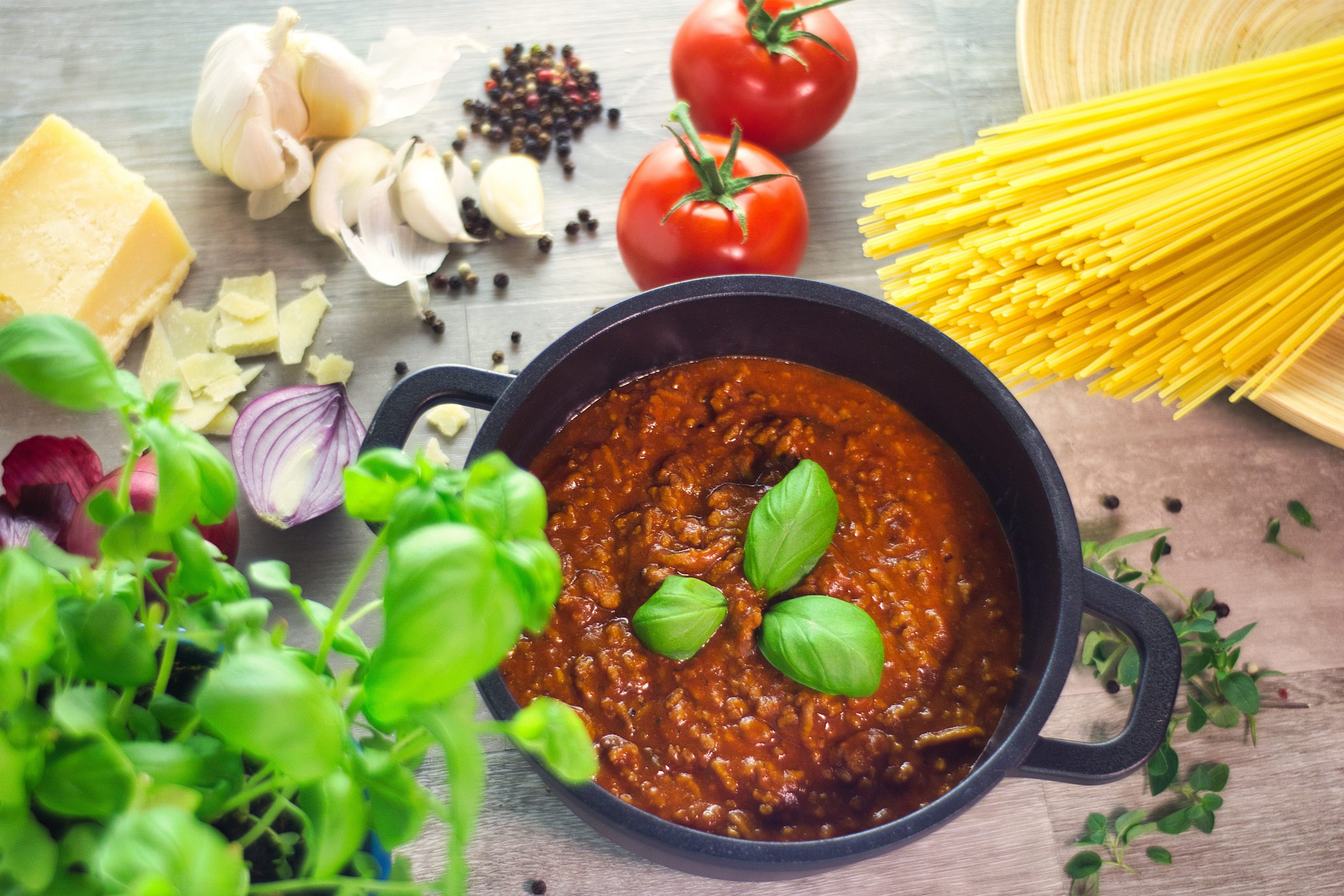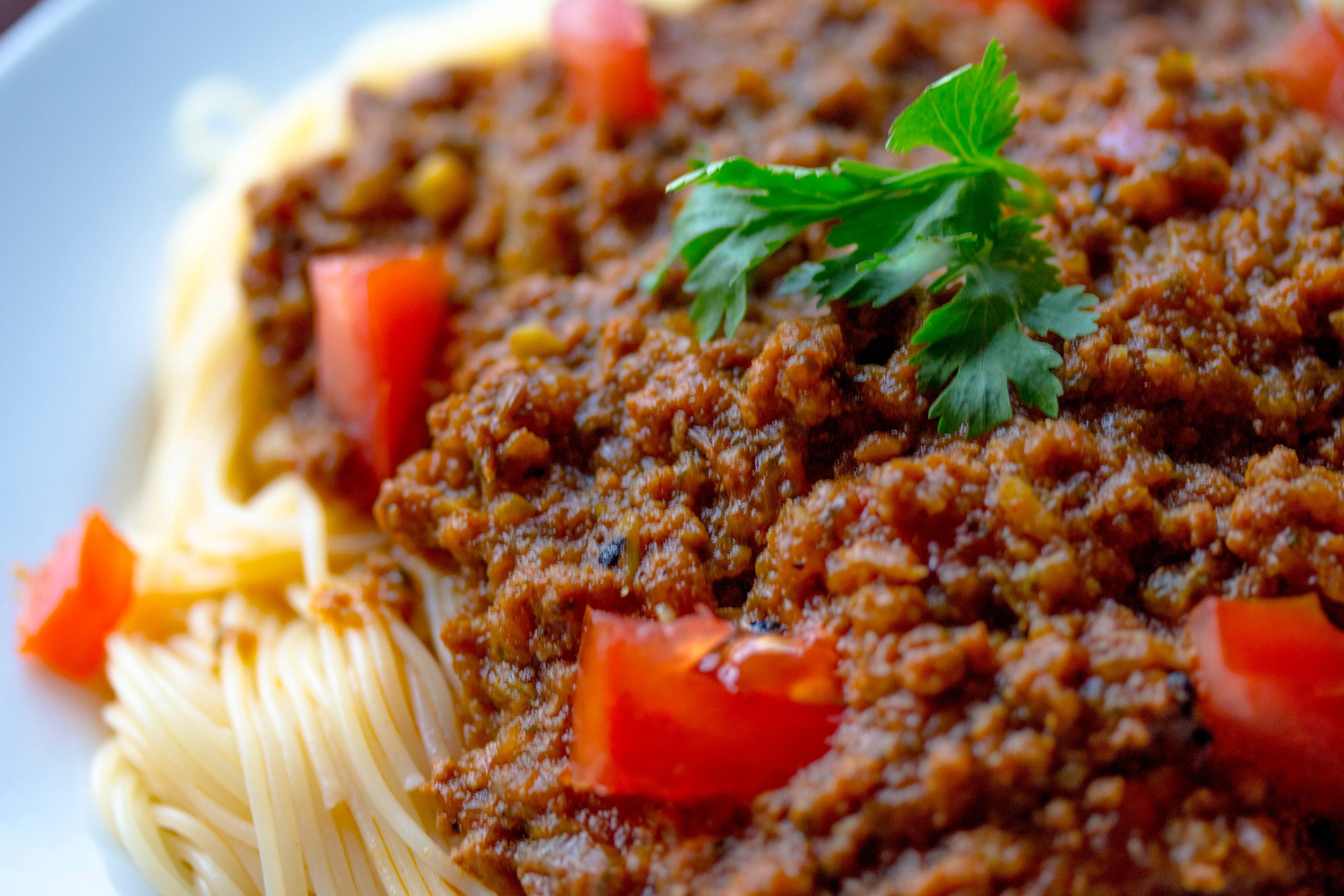If you’re wondering how to reheat Bolognese, you’ve come to the right site. You can reheat bolognese in the microwave and a conventional oven. It can be heated, but you must follow proper cooking procedures. This article will walk you through how to reheat bolognese, the different variations of bolognese, and how to store bolognese.

How to Reheat Bolognese?
It’s safe to reheat Bolognese in a microwave. The USDA states that for the beef sauce to be safe to serve, it must be reheated to an internal temperature of 74 degrees Celsius or 165 degrees Fahrenheit. You can use the oven or microwave to reheat the Bolognese. Here is listed below how you can heat Bolognese.
Using the Microwave to Reheat Bolognese:
One of the greatest innovations since sliced bread is the microwave. Although they are quick and simple, your food can end up being cold on the inside and warm on the outside. Use the advice listed below to avoid that.
- Put the whole dish in a microwave-safe container, like a glass, mason jar, or quart container.
- Stir it in after adding a little water, skim milk or broth. If you want your bolognese to taste even better, you may also add a little olive oil.
- If desired, season the dish with additional spices and parmesan.
- Use a non-metallic lid to cover the dish, but leave it open rather than completely closing it.
- Stirring in between, microwave for 90 seconds.
- If the sauce is too thick for your taste, add more liquid, such as broth, milk, or water.
- Continue until the dish is thoroughly heated. Have a wonderful supper!
Using an Oven to Reheat Bolognese:
Here is listed below how you can reheat the Bolognesein oven. If you have a little extra time, this is a great way that also works for bolognese. It guarantees that your sauce will come out perfectly, and if you add cheese, it will be crispy rather than gooey. Mouth-watering.
- Put your bolognese on a plate or container in the oven.
- If desired, sprinkle on a lot of cheese. Spices can also be added.
- Extra olive oil can be added to the bolognese to bring out the flavors of the seasonings.
- Set your oven’s temperature to 350 degrees Fahrenheit.
- The aluminum foil must be tightly affixed to the dish. Do not omit any steps.
- The dish needs about 15 minutes to heat.
- Periodically remove the dish to give it a toss and check the temperature. When you do, you can add more cheese for a dish that is even more delectable.
What Ingredients are in Bolognese Sauce?
This bolognese sauce recipe includes meat, minced onions, garlic, carrots, and celery that have been sautéed, along with crushed tomatoes, tomato sauce, and tomato paste. We also add plenty of dried oregano, oregano, and thyme, a tonne of fresh basil, chicken broth, a dash of balsamic vinegar, a touch of sugar, and other spices for flavor. I also enjoy adding red pepper flakes to a pot of Bolognese sauce to give it some extra flavor. Finally, heavy cream is added to give it a luscious richness that takes it to a new level.
Variation of Bolognese:
Veggie Bolognese
Veggie spaghetti bolognese is a quick, meatless alternative to traditional Bolognese packed with vegetables. It has all the classic Bolognese flavor and texture. It’s easy to prepare and takes about 25 minutes to simmer. You can make it in a food processor to speed up the preparation process. Before storing leftover bolognese, make sure it’s cool. This step will prevent bacteria from growing in the sauce.
Once cool, store it in an airtight container for up to three days. Reheating the sauce should be done over low heat to preserve its flavor. It can also be thinned with water if necessary. The shelf life of bolognese depends on how fresh the sauce is when you make it. Homemade bolognese has a shelf life of three to four days in the fridge, but it lasts much longer if you store it in the freezer.
Vegetarian Bolognese
This vegan spaghetti bolognese keeps well for a few days in the fridge. The sauce can also be frozen. When freezing, the sauce should be in a freezer-friendly container or placed in individual freezer bags. Thaw overnight in the refrigerator before serving. To reheat, stir the sauce in the pasta and heat it until it is hot.
Vegetarian spaghetti bolognese is a quick meal to prepare. It requires a few minutes of prep, but simmering the sauce will only take about 30 minutes. This sauce is a great option for vegetarians who want a delicious meal without all the fat and cholesterol. Vegetarian spaghetti bolognese keeps well in the fridge and is easy to make in advance.
The sauce is rich and creamy and is packed with fresh vegetables and walnuts. It is also seasoned with paprika, cinnamon, chili powder, and soy sauce. Vegetable stock is used to add extra flavor to the sauce. You can also add nutritional yeast to thicken the sauce.
Meat-Based Bolognese
Bolognese sauce lasts in the fridge for 3-5 days. It can also be frozen for up to three months. Just make sure to bring it to a simmer when reheating it. If you want to make it ahead, you can reheat it in the microwave in increments of 15 seconds. To reheat leftover Bolognese, you can either reheat it over low heat or microwave it.
Bolognese is typically made with ground beef or pork, onions, garlic, and parsley. Microwaving the sauce will reduce its flavor, so reheating it on the stove is best. It will last about two days at room temperature, but it must be refrigerated for better flavor.
When reheating it, make sure to pay attention to the look and smell of the sauce. If you plan on reheating your spaghetti sauce for multiple meals, you should consider freezing it. This sauce is highly suitable for freezing and can be easily prepared in advance. Moreover, it can be frozen in portions for easy storage.
Oil-Based Bolognese
There are several ways to make oil-based bolognese. One method is to remove the flour and replace the vegetable oil with olive oil or butter. Another method is to use only half of the meat in the recipe. You can also boil the sauce instead of simmering it.
You can also freeze leftover bolognese. To do this, use airtight containers or individual freezer bags. Then, thaw it overnight in the refrigerator and reheat it with some additional liquid. You should use a slow, low-heat setting to keep the sauce fresh and flavorful when you reheat it. Bolognese sauce can last up to three days in the fridge.
If you want to reheat leftovers, you can freeze jars of sauce. The sauce will stay in the fridge for three to four days, but you should use it within three or four days. Once thawed, the sauce should be mixed into the cooked spaghetti. You can also use leftovers in other recipes, such as lasagna or pasta salad.
What is the Shelf Life of Bolognese Sauce?
Bolognese sauce can be kept in the refrigerator for up to a week when properly refrigerated. It can also be frozen for up to three months. Bolognese sauce can easily last up to three days when properly stored in the refrigerator. To ensure the sauce lasts longer, I suggest putting it in the refrigerator in an airtight container. When storing sauces, make sure the container is airtight.
How to Store Bolognese?
Bolognese leftovers can be frozen for up to three months (to retain the best quality). Place your cooled leftovers in an airtight container or divide them among zip-top freezer bags. If using the latter, deflate the bags after removing extra air before sealing and storing them flat. When making bolognese, it’s better to freeze the sauce and prepare fresh pasta when reheating. However, this is not required, and your leftover bolognese will reheat without issues.
How can you Thawed and Rewarm Frozen Bolognese?
Your leftover bolognese must be thawed if it was frozen before being heated. It should ideally defrost in the refrigerator throughout the entire night. However, if you’re in a rush, you can either thaw the freezer container in warm water or on the defrost setting in the microwave for one to two minutes. You can use the stovetop, microwave, or oven method described above to reheat your
Is Bolognese Leftovers Edible?
After enjoying a delicious bolognese, The answer to this is not as simple as one might assume. To help you decide whether or not to save your leftover pasta for another dinner, we will discuss the advantages and disadvantages of eating leftover pasta.
Conclusion
Reheating Bolognese saves you time and money, plus you can add a new flavor to it. The Food Standards Agency recommends refrigerating spaghetti bolognese no more than two hours after cooking. This is because bacteria can easily grow in temperatures between 40degF and 140degF, and the spaghetti should not be left out for longer than this.
Even if you do leave it out for more than two hours, it is still better to throw it away than risk spoiling it. Alternatively, you can reheat it several times as long as it is cooked properly. However, this is unlikely to improve the taste of the finished dish.

